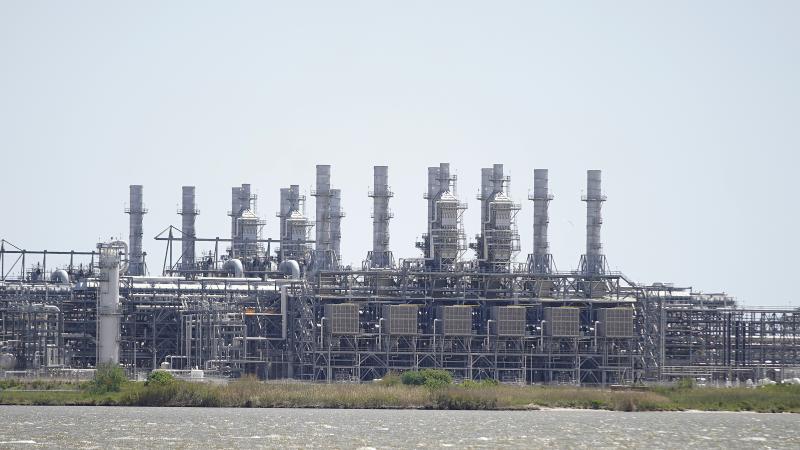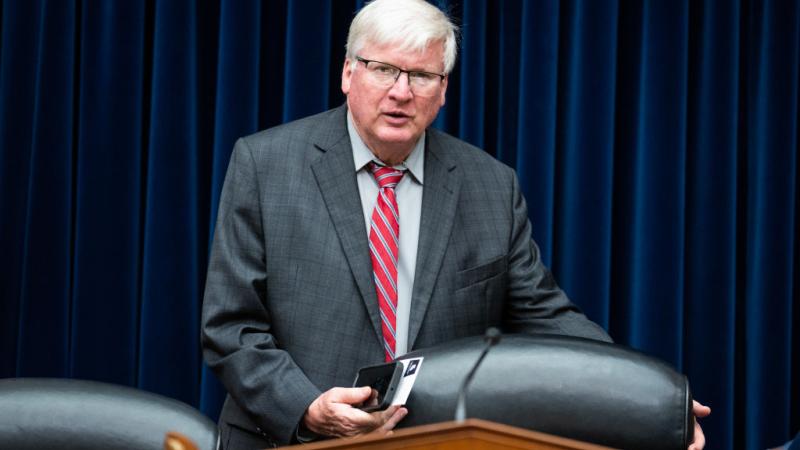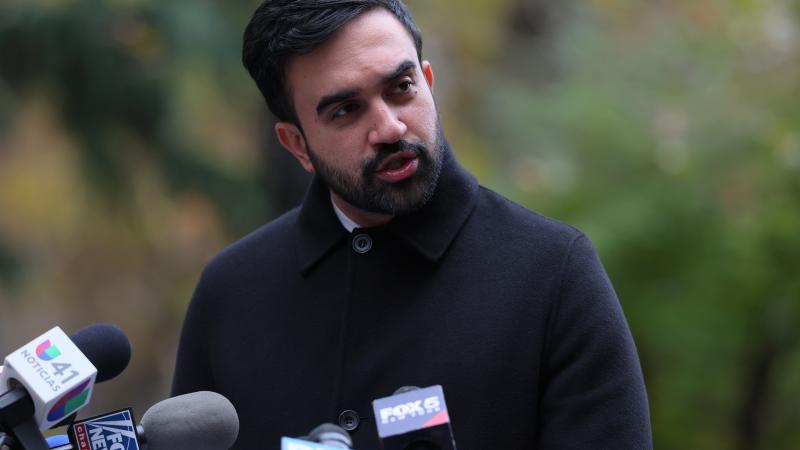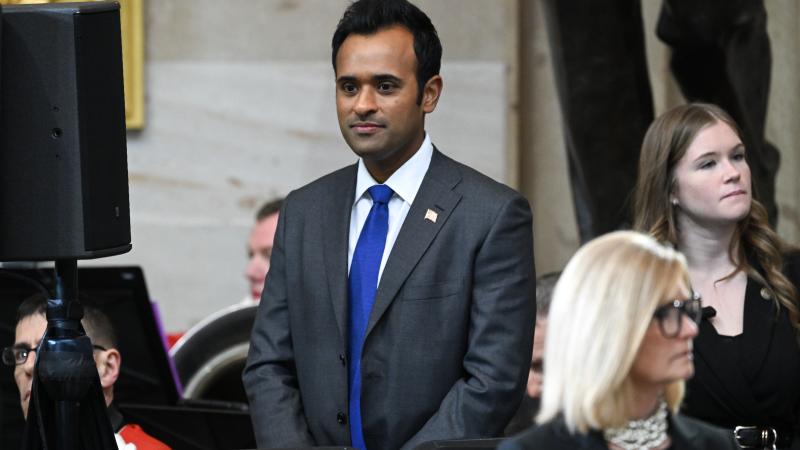Offshore wind opponents say internal docs show Biden admin took shortcuts in permitting projects
Interior Secretary Doug Burgum halted construction of Empire Wind pending a review of the “rushed” manner in which the Biden-Harris administration approved the project. Internal documents show that the Biden-Harris administration may have taken some liberties to reach Biden's offshore wind goals.
Offshore wind opponents expressed disappointment as Norway-based Equinor this month quietly started construction on Empire Wind, a wind project off the coast of Long Island. After President Donald Trump placed a moratorium on offshore wind leases, they had hoped their concerns would be heard.
This week, their hopes were buoyed as Interior Secretary Doug Burgum informed the developer that the department is halting construction of the project pending a review of the “rushed” manner in which the Biden-Harris administration approved the project.
“We’re elated. We've been working towards this for over two and a half years. We have done everything to get our elected officials’ attention, and to have them fight for us in the federal government. And finally, they're hearing us,” Christina Tisi-Kramer, a resident of Long Island, New York, told Just the News.
3,000 steel and plastic behemoths
Tisi-Kramer is an offshore wind activist who heads a group called Protect Our Coasts — LINY. It’s one of dozens of grassroots coastal groups opposing offshore wind, and they say the previous administration ignored their concerns.
The department’s review of the Biden-Harris administration’s offshore wind approvals comes as commercial fishing companies petition the Supreme Court to review a lower court’s decision to uphold the approval of Vineyard Wind, a project off the coast of Nantucket.
Former President Joe Biden had planned a rapid expansion of offshore wind farms, with a goal to have 30 gigawatts of capacity by 2030 — roughly 3,000 turbines, each of which would be up to 1,000 feet tall.
A “friend of the court” brief filed by the Save Right Whales Coalition in support of the fishing companies’ petition details some of the shortcuts that the previous administration took to bring the democrats' green dream to fruition. The brief argues that the Bureau of Ocean Energy Management (BOEM) rewrote requirements in a way that expanded the agency’s discretion, making it easier to dismiss the impacts the offshore wind industry would have on the fishing industry — and it was done without following rulemaking regulations.
The Supreme Court largely curtailed such self-regulated agency discretion in Loper Bright Enterprises v. Raimondo. The 6-3 decision in that case, delivered on June 28, 2024, effectively overturned the 40-year-old "Chevron doctrine," which had previously granted courts deference to federal agencies' interpretations of arguably ambiguous laws.
Burgum: "Without sufficient analysis"
In his memorandum, The Washington Free Beacon reported, Burgum cited President Donald Trump’s executive order enacting a moratorium on offshore wind leasing pending a review of the impacts of these projects.
Burgum said that the Department of the Interior “obtained information that raises serious issues” over the approval of Empire Wind. The Biden-Harris administration, Burgum wrote, rushed the approval “without sufficient analysis or consultation among the relevant agencies.” According to The Wall Street Journal, Equinor is weighing legal options, including an appeal.
In a letter to Equinor on Wednesday, BOEM informed the company that it could not proceed with construction until its review of feedback the agency received is complete. "BOEM is acting to ensure that all activities...are carried out in a manner that provides for the protection of the environment, among other requirements," BOEM wrote.
Vineyard Wind, which is much further along in construction and has some operational turbines, has faced multiple lawsuits over its permitting. ACK 4 Whales sued the federal government, arguing that agencies failed to follow requirements of the Endangered Species Act (ESA) in permitting the project. After the U.S. Court of Appeals for the First Circuit upheld a district court's decision to dismiss the suit, the group appealed to the Supreme Court. Their petition argued that the agencies didn’t consider the cumulative impacts of other planned projects when they approved Vineyard Wind, which violated the ESA. The high court declined to hear the case.
Six commercial fisheries also filed a lawsuit in the U.S. District Court for the District of Columbia, arguing in 33 separate claims under various laws that the approval of Vineyard Wind violated federal law by ignoring multiple legal protections for impacted stakeholders, including conducting environmental assessments and allowing for timely public comment.
The district court deferred to the Biden administration’s interpretation of federal law in permitting the project, and the companies filed a petition for certiorari with the Supreme Court. The federal government on Wednesday waived its right to respond to the petition.
Reasonable uses
In their amicus brief, the Save Right Whales Coalition (SRWC) argues that BOEM unlawfully reinterpreted the Outer Continental Shelf Lands Act (OCSLA) to expand its discretionary authority and bypass statutory protections for ocean users and marine ecosystems.
The OSCLA contains a provision that says the Interior Secretary, in approving any projects, must prevent interference with other reasonable uses of the outer continental shelf, which includes commercial fishing. In April 2021, the Department of Interior Deputy Solicitor issued an opinion that the SRWC’s brief says artificially expanded the agency’s discretion over what qualifies as “reasonable uses” and what level of interference is permissible.
BOEM failed to publish a Notice of Proposed Rulemaking on the reinterpretation of the OSCLA, as required by the Administrative Procedure Act, until January 2023. The notice requirement allows the public time to review the rule and comment before it’s finalized.
The rule was finalized in July 2024. Between April 2021 and July 2024, the Department of the Interior approved Vineyard Wind, South Fork Wind, Ocean Wind 1, Revolution Wind, Coastal Virginia Offshore Wind, Empire Wind, New England Wind 1, and Atlantic Shores. Each Record of Decision (ROD) for these projects cites the April 2021 opinion, which had not been finalized at that point.
Compensation funds as a substitute for prevention
Instead of preventing interference with commercial fishing, the ROD for Vineyard Wind relies upon after-the-fact compensation for displaced fishermen. It estimates that commercial fisheries expect to lose a total of $14 million over the expected 30-year lift time of the project. Vineyard Wind, the ROD explains, established compensation funds to mitigate these losses.
“The law says they have to prevent interference. If you're going to set up a program where you're going to pay someone because they cannot fish anymore, you've interfered with them. Financial compensation is not prevention,” Lisa Linowes, spokesperson for SRWC, told Just the News.
No fishing can take place within the boundaries of an offshore wind farm. Not only does it destroy habitat for marine species, the infrastructure presents potentially deadly hazards for fishing vessels and their crews.
It’s also not clear how committed the Biden-Harris administration was to compensating the fishermen. In the final days of the Biden-Harris administration, the Department of Interior issued guidelines for mitigating impacts on commercial and recreational fisheries on the outer continental shelf. In it, the department claimed it wasn’t under any legal obligation to compensate the fishing industry.
“There are no existing federal regulations that require compensation for economic loss from displacement attributed to offshore wind energy installations,” the document states.
Linowes said that, even putting aside that compensation isn’t prevention, the agency’s guidelines create a lot of uncertainty for the fishermen whose industry will be impacted by these projects. A 2020 study from the University of Connecticut reported that more than 41,172 workers were employed in the commercial fishing industry in the region at the time.
“The wind company could just walk away from that. There are no teeth in there, because BOEM doesn't have the legal authority to force it on anyone,” Linowes explained.
Environmental impact deniers fight back
Proponents of offshore wind are vowing to fight Trump’s efforts to review the Biden-Harris administration’s permitting shortcuts.
"Trump's idiotic attacks on offshore wind development are killing our clean energy future. This stop-work order could shutter one of the largest offshore wind projects in the country, and for what? It’s certainly not a concern for environmental impact," Jason Walsh, executive director of the Blue Green Alliance, which advocates for the renewable energy industry, said in a statement.
Gov. Kathy Hochul said in a statement that halting Empire Wind will hurt the state economically. “As Governor, I will not allow this federal overreach to stand. I will fight this every step of the way to protect union jobs, affordable energy and New York’s economic future,” Hochul said.
Since Trump took office, Hochul has said she would defy Trump’s “unleashing American energy agenda” and continue to follow the climate agenda of the Biden-Harris administration. While she argues that the Trump administration’s actions will hurt New York’s economy, multiple analyses of the New York Climate Act say that it will in fact cause rapidly rising energy rates and the state may suffer blackouts.
Writing on his "Manhattan Contrarian" blog, Francis Menton, a resident of New York City's West Village and retired partner of the law firm of Willkie Farr & Gallagher LLP, questioned Hochul's claim that the project would help the state's economy. The New York State Energy Research and Development Authority estimated in 2018 that the all-in development cost of the project was $83.36 per megawatt hour. In September 2023, the developers canceled their contracts. To secure the building of Empire Wind and other offshore wind projects, New York signed new contracts at a price of $150.15 per megawatt hour — an 80% increase over the 2018 estimated cost.
Tisi-Kramer with Protect Our Coasts/LINY said that Hochul is ignoring the concerns of the residents of Long Island who will be most impacted by this project.
“She’s a melting witch right now. When Kathy Hochul takes it upon herself to make decisions for Long Islanders that she doesn't even know, that's an overreach. And we want our local elected officials to make decisions for us, because we voted them in,” Tisi-Kramer said.
The Facts Inside Our Reporter's Notebook
Links
- expressed disappointment
- Equinor
- Empire Wind
- placed a moratorium on offshore wind leases
- Protect Our Coasts -- LINY
- one of dozens of grassroots coastal groups
- Vineyard Wind
- Save Right Whales Coalition
- Bureau of Ocean Energy Management
- Loper Bright Enterprises v. Raimondo
- the Washington Free Beacon reported
- executive order enacting a moratorium
- According to The Wall Street Journal
- ACK 4 Whales
- sued the federal government
- petition
- filed a lawsuit
- filed a petition with the Supreme Court
- ruling in Loper Bright v. Raimondo
- Chevron deference
- waived its right to respond to the petition
- Outer Continental Shelf Lands Act (OCSLA)
- outer continental shelf
- issued an opinion
- Notice of Proposed Rulemaking
- finalized in July 2024
- South Fork Wind
- Ocean Wind 1
- Revolution Wind
- Coastal Virginia Offshore Wind
- Empire Wind
- New England Wind 1
- Atlantic Shores
- Record of Decision
- ROD for Vineyard Wind
- potentially deadly hazards for fishing vessels
- document states
- Blue Green Alliance
- Kathy Hochul said in a statement
- Hochul has said she would defy
- multiple analyses of the New York Climate Act
- Manhattan Contrarian
- Willkie Farr & Gallagher LLP














